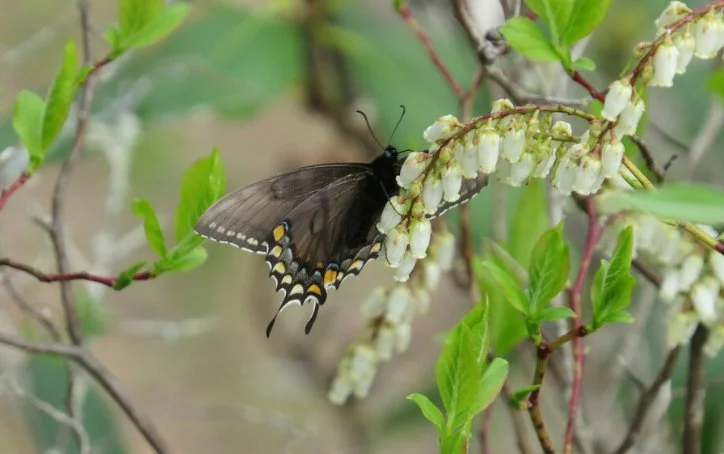Summer Butterfly Count
Every year, BRDC conducts the summer butterfly survey to monitor species and the condition of their habitat. We look for changes that occur on a year-by-year basis. One of, if not the largest, threat to butterfly populations is loss of habitat- whether that loss is due to human destruction, introduction of invasive species, pesticide use, etc.
Last Wednesday, five teams headed out in search of butterflies… and butterflies we did find! All together, we saw 30 species and 814 individuals! Most of the species we saw were typical for this time of year and location. Cabbage whites and clouded sulphurs had a pretty big lead on the other species. Our next top two are groups of species that can be very tricky to identify in the field. Due to some unknown IDs, we combined them together. “Azure sp.” includes spring, summer, and dusky azures of the genus Celestrina. “Tiger swallowtail sp.” includes Eastern and Appalachian tiger swallowtails. The next three species are different fritillaries, two on the larger side (great spangled and aphrodite) and one smaller (meadow). And last of the top 8, the silver-spotted skipper!
Summer Butterfly Count: Top species
Even though it wasn’t our top species last week, let’s learn a little more about Virginia’s state butterfly, the Eastern tiger swallowtail! ETSs are usually pretty easy to find. In fact, they are too-often seen flitting across roads and into oncoming traffic! They like to fly high and aren’t picky about their habitat- generally preferring deciduous forests and streams, but venturing into other areas that have ample food sources. Its range extends all up and down the east coast (except the northern part of Maine), and far into the midwest. Females head into the forests to lay their eggs when it's time. Like many butterfly species, they have a host plant that they trust to feed their young. For ETSs, species in the magnolia and rose family are where it's at. Specifically, yellow poplars (Liriodendron tulipifera) and wild cherries (Prunus avium). Compared to other butterflies, they are on the large side. Most have yellow wings with black tiger striping, and orange and shimmery blue accents by their long tails. Females have significantly more blue and orange- on males it's just the tiniest splotches.
But, of course, identification isn’t always that easy! There is another species of butterfly that looks almost identical to the ETS- the Appalachian Tiger Swallowtail (Papilio appalachiensis). ATSs are only active in spring, so in summer and fall it’s most likely an ETSs. But in that spring window, identification is near impossible without catching your speicman. ATSs are usually said to be a little larger, a slightly paler yellow, with less blue accenting on the hind wing. Even looking at a specimen of each side-by-side, it can be near impossible to see the difference due to species variations.
But wait- let’s add another layer into the identification issue before the end of this blog post. Here in Virginia, we also have dark-morph ETS females. Instead of a yellow base color, they are light black with undertones of yellow peeking through. They also have a slightly different pattern on the underside of their hindwing. This morph mimics the coloration of the pipevine swallowtail (Battus philenor), which is extremely toxic. Batesian mimicry is a useful adaptation for convincing predators that you’re toxic too! Other species in the “dark swallowtail” complex are Eastern black swallowtails (Papilio polyxenes) and spicebush swallowtails (Papilio troilus).


